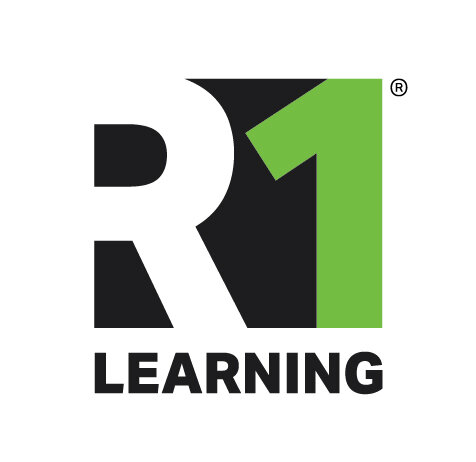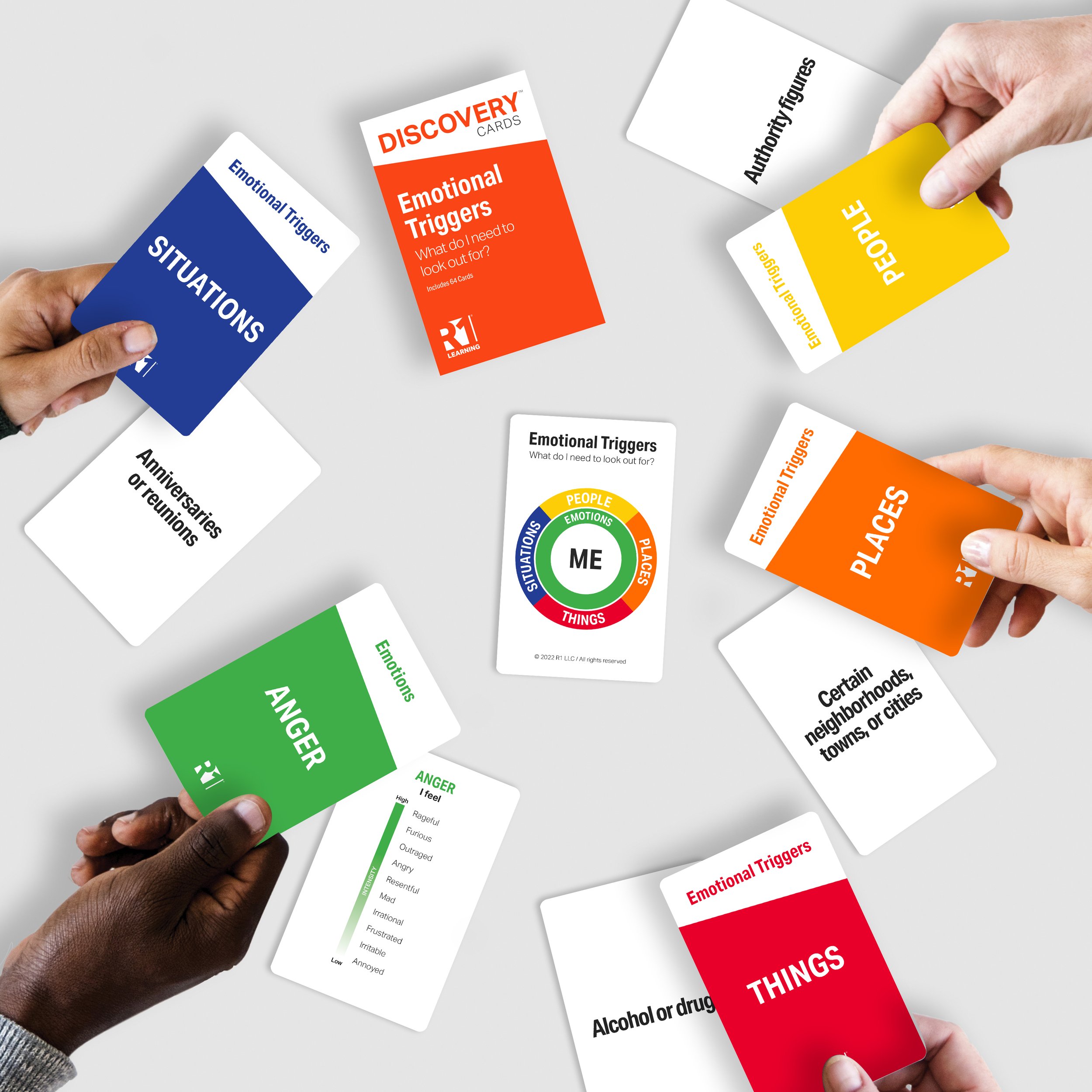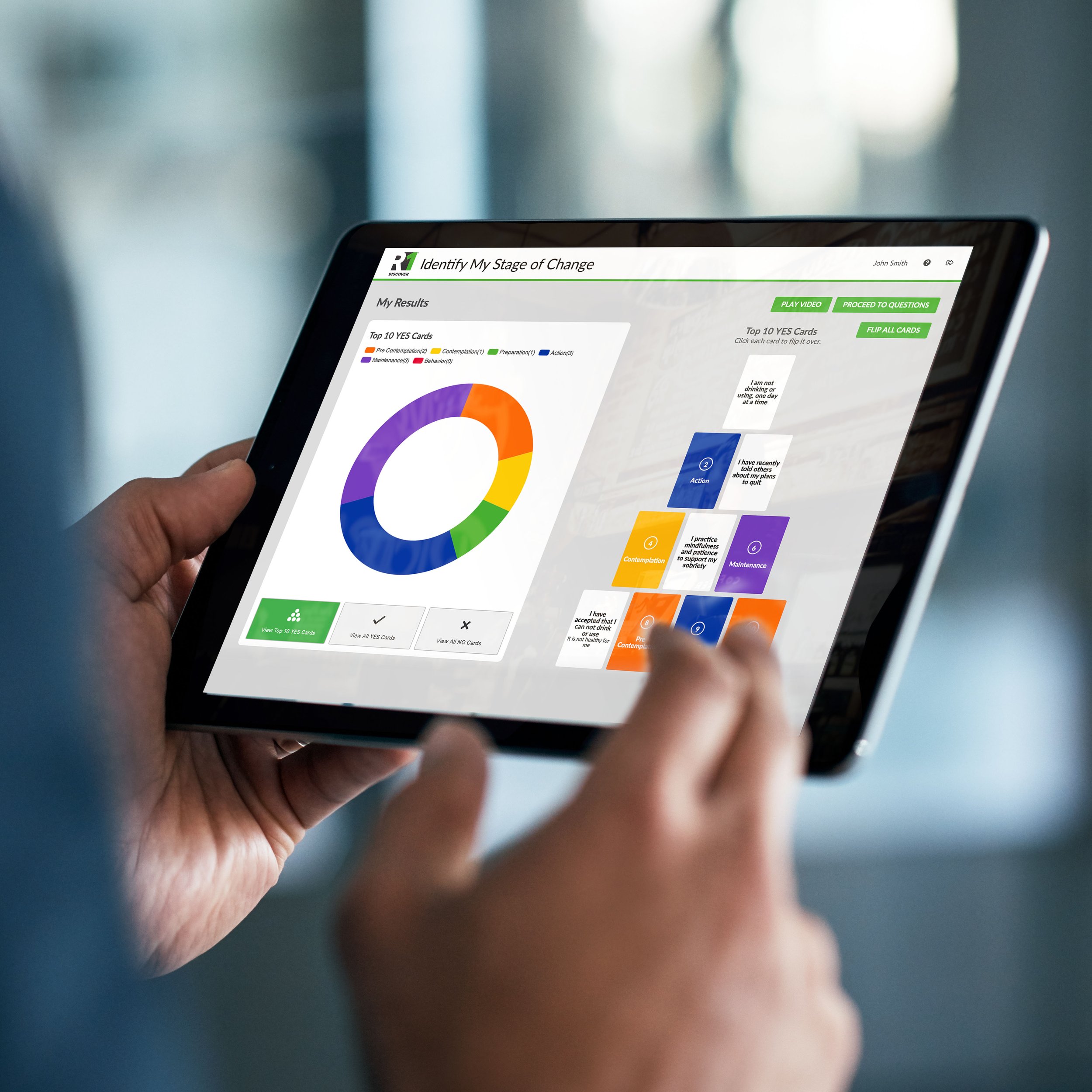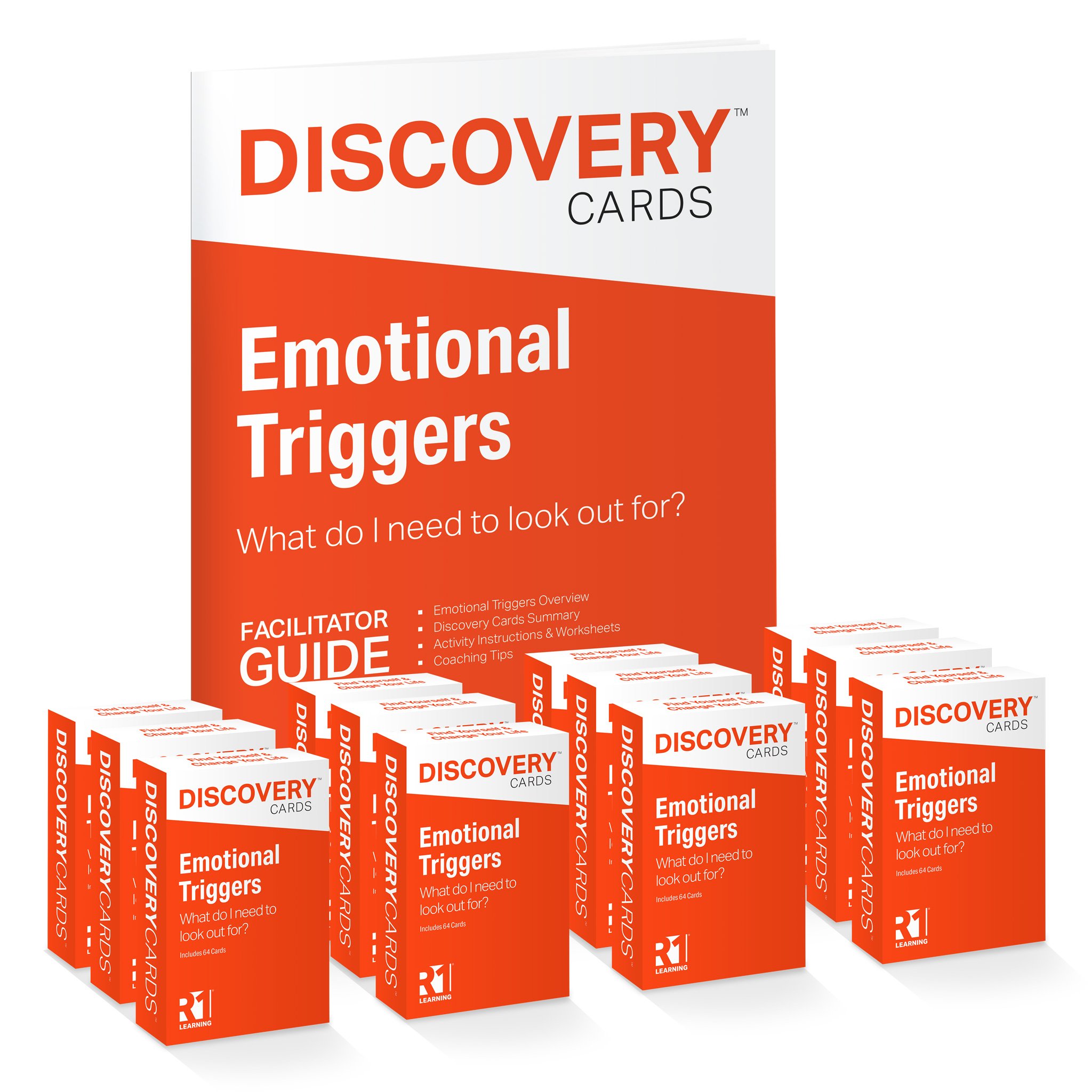Emotional Triggers — What Activates My Physiology and Moves Me to Behavior?
Emotional wellness is high on the list for overall mental and physical health.
In developing the R1 content for Emotional Triggers, we’ve built from the evidence base from trauma experts, adverse childhood experiences (ACEs), emotional regulation theory, Cognitive Behavioral Therapy (CBT), and Dialectical Behavioral Therapy (DBT). These practices form the foundation of how external triggers in one’s environment and thoughts in one’s mind can activate the physiology of emotions and move individuals toward behaviors. Our goal is to use this model and vocabulary to help individuals explore their own experiences, identify triggers in their environment and thoughts, and develop an emotional regulation mindset leveraging healthy coping strategies. Today’s focus is on identifying triggers and linking them to the emotions and feelings they activate.
A trigger is a stimulus that brings on a reaction or series of reactions. Triggers can set off memories or even flashbacks, transporting the individual back to the event or situation of the original behavior.
Emotional triggers are mental or emotional factors that can elicit unhealthy behavior, remind individuals of their prior situations, experiences, events, or activities (to include traumatic experiences), and may spark thoughts and feelings that are uncomfortable or challenging. Triggers may be external — such as people, places, things, or situations closely associated with these thoughts or environmental factors. They may also be internal — such as negative or positive emotions and feelings.
Explore R1 Discover — Interactive Engagement Tools
Emotional triggers are challenging to avoid because they are usually an integral part of one’s life. Most of the time they are not completely avoidable since people do not generally have complete control over the environments they move into and out of on a daily basis. But individuals can anticipate and monitor their environment, and have a plan for healthy actions to take when emotional triggers present themselves. Knowing what to look out for is helpful.
Identifying Emotional Triggers
Helping individuals think about their past experiences to identify environmental triggers is central to preventing other mental health conditions such as anxiety or depression. Our model highlights four types of environmental triggers — people, places, things, and situations. These are the stimuli in the environment that spark the emotional process, activate physiological changes in the body, and move individuals toward action tendencies, and behavior. These actions can be either healthy or unhealthy behaviors depending on the emotional regulation practices of the individual. Ideally the goal in emotional wellness is to employ healthy coping strategies when triggers present themselves. Leaning how to use skills from Cognative Behavioral Therapy (CBT) aor Dialectical Behavioral Therapy (DBT) become useful tools for individuals to use and practice. Helping individuals anticipate, plan for, observe, and avoid these environmental triggers is at the core of effective emotional regulation and emotional wellness.
Trigger Types — Finding the Words for Specific Triggers
Understanding emotional triggers is new for many people on the road of mental wellness. Like other subjects, individuals need to learn the basics before they can take action – building a vocabulary is the first step. Think about yourself or someone you are working with. Think back to an experience and examine what was happening in the environment that may have sparked it. What caused you to feel disturbed – anxious, frustrated, hurt, or lonely? Conversely, what caused you to feel celebratory, excited, or overconfident? Triggers activate both negative and positive emotions – both can move individuals to unhealthy or risky behaviors. Use the Trigger Type categories below to build a list of your triggers. The Emotional Triggers Discovery Cards include over 100 specific triggers. These are just a few examples.
People (friends, family, and other persons) who I encounter or think about that activate my emotions. These can include people we know and do not know. They are often people close to us from our family, school, work, faith-based community, or people we come into contact with on a frequent basis.Discovery Cards examples include:
Past intimate relationships or exes
Politicians
Spouse, partner, boyfriend, or girlfriend
Store clerks
Teachers or classmates
Coaches or teammates
Employers or co-workers
Family members
Friends
Neighbors
Places where I go or have been that activate my emotions. These may include places from past experiences where memories of these places activate emotions related to people, things, and situations.Discovery Cards examples include:
Hotels
Malls, stores, restaurants, or bars
Past romantic locations
Schools or campuses
Work locations
Airplanes, airports, or terminals
Certain neighborhoods, towns, or cities
Friend’s or relative’s home
Grocery or convenience stores
Home
Things that I am near or come into contact with that activate my emotions. These may include things from past experiences where memories of these things activate emotions related to people, places, and situations. Discovery Cards examples include:
Phones (contact lists, ring tones, etc.)
Photos, pictures, or galleries
Social media posts
Specific cars or trucks
Specific noises or sounds
Certain clothes or shoes
Certain tastes or smells
Debt or bills
Emails or texts
Hair, certain color or style
Combinations of people, places, and things that I experience that activate my emotions. These can be either new situations or thoughts of experiences. from my past. Discovery Cards examples include:
Disapproval or critisim
Feeling unwanted or unneeded
Loss of an animal or pet
Rejection, being excluded or ignored
Unfair or unjust treatment
Anniversaries or reunions
Being alone or living alone
Challenged beliefs
Conflict with others
Death of a family member or loved one, funerals
Triggers Spark Emotional Reactions
Now that you have identified a list of triggers, take a moment to determine which emotions and feelings were activated and the emotional state you reached. A list of emotions and feelings is included below. For each trigger you picked, which emotions and feelings were activated? How fast did they come and go? How intense were they? How long did they last? Remember, emotions and feelings when activated can quickly move individuals to unhealthy behaviors if unregulated.
Emotions & Feelings that contributed to drinking or using. Discovery Cards examples include:
Joy — elated, celebratory feelings, happy, hopeful, content
Love — longing, passionate, affectionate, compassionate, connected, warmth
Strength — powerful, fearless, confident, determined, strong, optimistic
Anger — outraged, resentful, frustrated
Fear — threatened, anxious, overwhelmed
Guilt — remorseful, regretful
Pain — disappointed, hurt, grief or loss, pity (self and others), lonely
Shame — humiliated, embarrassed
Although this post is coming to a close, the work for exploring emotions and feelings and how to regulate them has just begun. Take a moment to learn more about emotions and feelings in our post, 8 Core Emotions – Can You Express Them? We will be exploring Emotional Regulation Practices in an upcoming post soon. For now, answer the Questions to Explore below to summarize your major learnings from today. We encourage you to write down your answers and share them with another person.
Questions to Explore
Answer these questions for yourself or someone you are working with.
Did you find this model helpful in thinking about and identifying your emotionial triggers?
Did the Trigger Types help you to better pinpoint specific triggers? How were these categories helpful?
Which Trigger Types were most prominent in your list? Insights?
As you look back over your life and experiences and emotional challenges, have these triggers always played a primary role? How?
Which emotions and feelings were activated in conjunction with these people, places, things, or situations? How intense were they?
What actions can you take to avoid these triggers in the future?
Who can you ask for help and support?
Thank you for reading this post and participating in this activity. Contact us if you would like to learn more about Emotional Triggers or the R1 Learning System. We look forward to hearing from you.
References
Lazarus RS. “Cognition and Motivation in Emotion.” American Psychologist 46:352–367, 1991
Scherer KR. “What Are Emotions? And How Can They Be Measured?” Social Science Information 44:693–727, 2005
Copyright 2023 R1 Publishing LLC / All Rights Reserved. Use of this article for any purpose is prohibited without permission.
Facilitate Engaging One-on-Ones and Group Activities
Emotional Triggers Discovery Cards and Group Kits – Engagement Tools
Integrating these tools into your groups will allow individuals to build their own vocabulary, think about these concepts concretely, and put their choices into action. Visit the R1 Store to learn more about our relapse prevention topics and Emotions & Feelings Discovery Cards Group Kits. The Discovery Cards are an amazing tool for exploring these topics with individuals or groups.
Here are a few ideas to help you learn more about R1 and engage others on this topic:
Share this blog post with others. (Thank you!)
Start a conversation with your team. Bring this information to your next team meeting or share it with your supervisor. Change starts in conversations. Good luck! Let us know how it goes.
Visit www.R1LEARNING.com to learn more about R1, the Discovery Cards, and how we’re creating engaging learning experiences through self-discovery.













